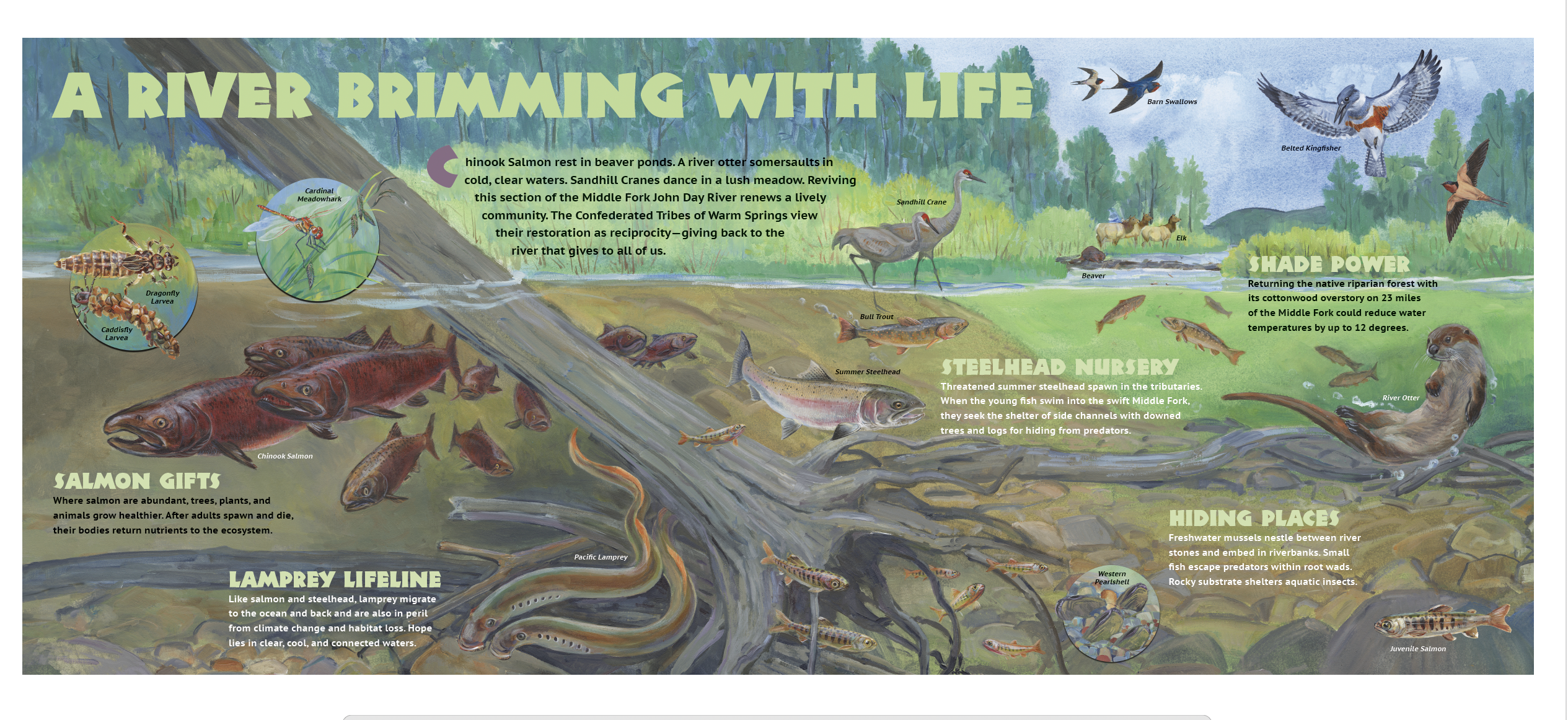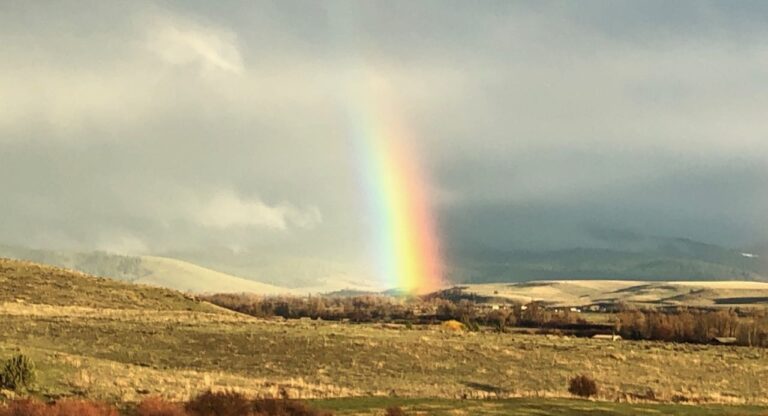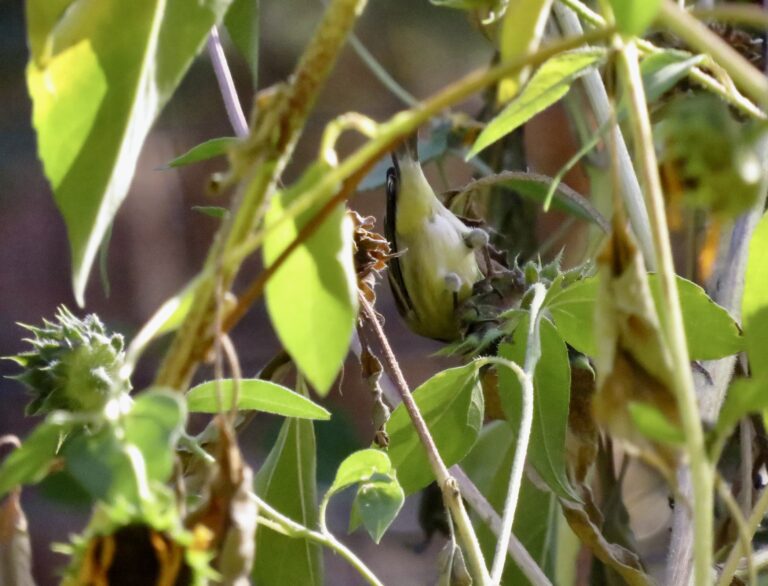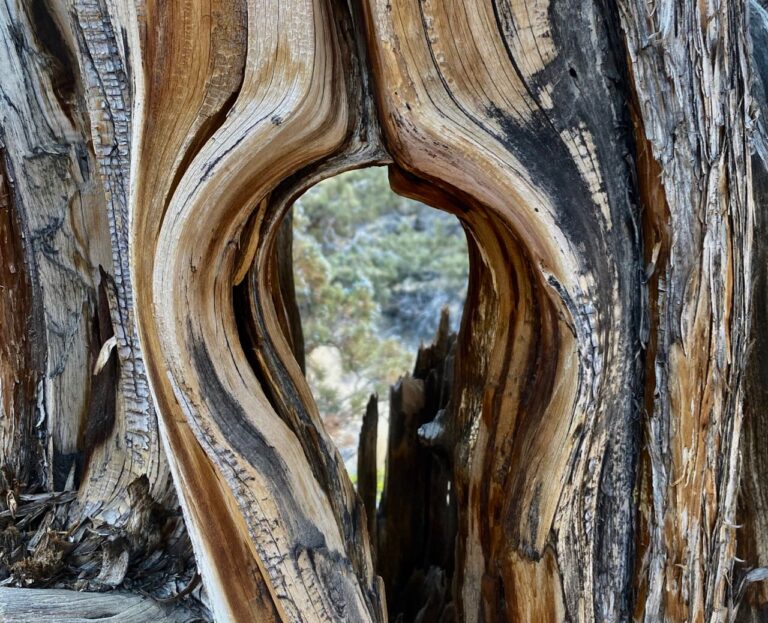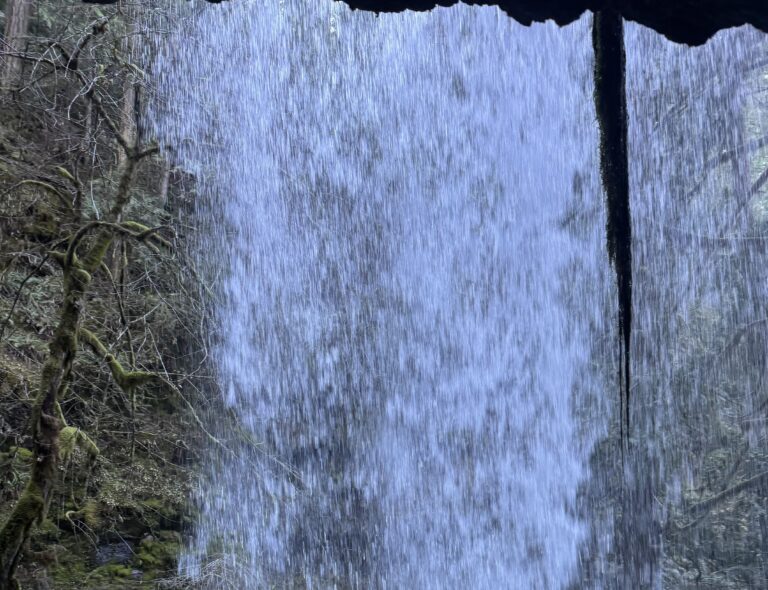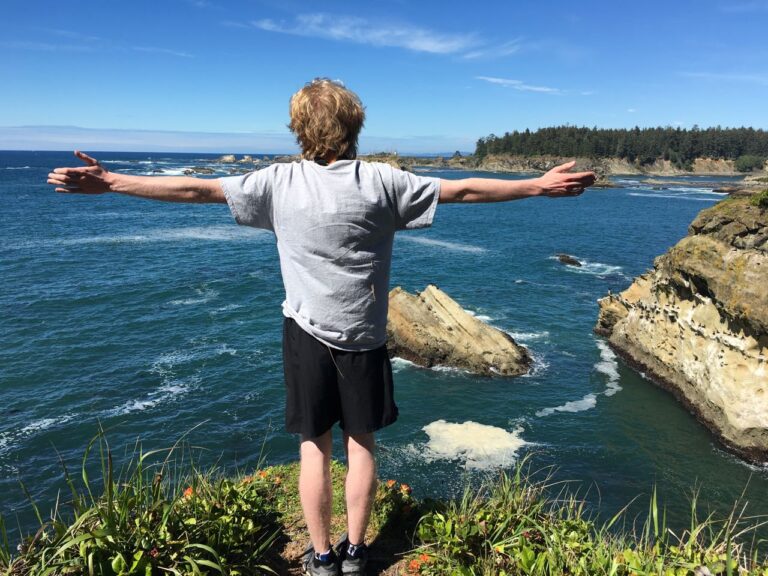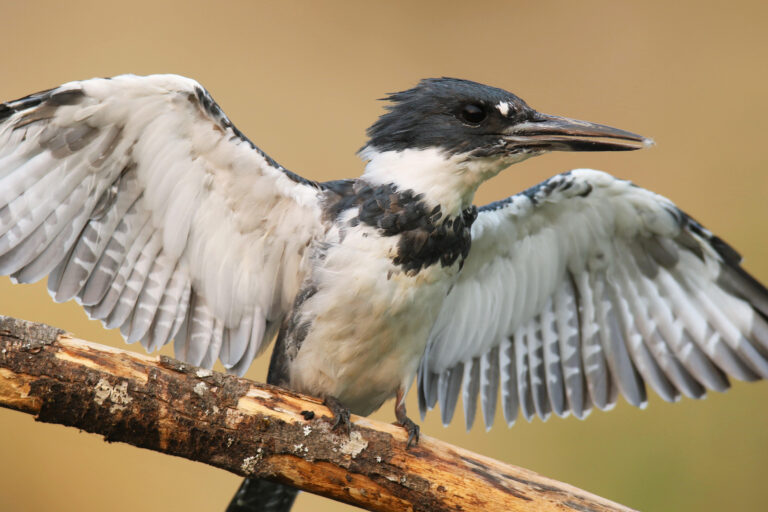River of Renewal Rising
This is another version of my Substack post ( A Tattered Flag...) for this First Day of Spring.
“For many years I have been encouraged by the thought: ‘You can count the seed in an apple, but you cannot count the apples in a seed.’”— David S. Richie, Quaker peacemaker and my great uncle.
Behind our house and beyond a patch of ponderosa pines is a 7000-year-old lava flow. Single trees root into the hope of soils in cracks. All winter, I’ve watched an American flag at the lava field’s edge fray and tatter in gusts. Today, I was struck by this image in a new way. As long as there’s a remnant left, there’s a possibility of re-weaving and saving our Democracy in crisis.
On this first day of Spring, I offer an anecdote of river restoration to illustrate the power of people coming together to reweave what’s tattered, and to provide resiliency in a hotter world brought on by climate change–brought on by us. The story begins with wild salmon on their dangerous journey from the ocean up the Columbia River to enter tributaries and reach ancestral birthplaces. There, they spawn and die so their young may continue the circle of life.
I care deeply about removing the four dams on the lower Snake River for struggling salmon to avoid extinction. But this reweaving offering is about the Middle Fork of the John Day River in Oregon, where I wrote a series of interpretive displays at a wayside overlooking a major restoration project of the Confederated Tribes of the Warm Springs (see link to the project). The tribes own this stretch of river –a key part of their ceded lands from the Treaty of 1855. The ongoing restoration for salmon, steelhead, and lamprey; and renewal of lush riparian areas for culturally important plants gives me hope for our future. I’m deeply grateful to the tribes showing us the way of reciprocity.
The John Day River is the longest free-flowing tributary of the Columbia—from headwaters in northeast Oregon streaming 281 miles to enter the great river above the John Day dam. Chinook salmon still must navigate three Columbia River dams to reach the John Day River, but not the brutal eight dams for fish swimming all the way to the Salmon River.
Within three years, the Confederated Tribes of the Warm Springs and their partners transformed a damaged stretch of river that was artificially confined to a narrow channel and separated from the floodplain by a historic railroad grade. On my first field visit two summers ago in August, I witnessed six adult chinook salmon resting side by side in a deep and cool pool that hadn’t been there the year before.

Reconnecting the floodplain, re-creating channels and pools, and planting thousands of native plants and trees took heavy machinery and gentle nudges. Guidance came from indigenous knowledge and western science. Right away, beavers moved in to build beaver dams, spreading and holding the water and rejuvenating the meadows.
If you ever find yourself in northeast Oregon driving between Prairie City and Baker City—take the turn just past Austin Junction on the Middle Fork road. Drive a few miles past Bates State Park. Be amazed. Take heart.
We, too, can find ways to reconnect, re-create, and renew. When we work together, learn from the natural world, and never give up as long as their’s a shard of hope, we can be like a wild free-flowing river—in companionship and kinship.
Try this. Turn on the tap just enough for a few drops, a little more for a trickle, and then a stream. Cup your hands. Praise the gift of good water. Thank the Earth and know even one droplet can raise the sea–let’s be part of the rising and renewal!
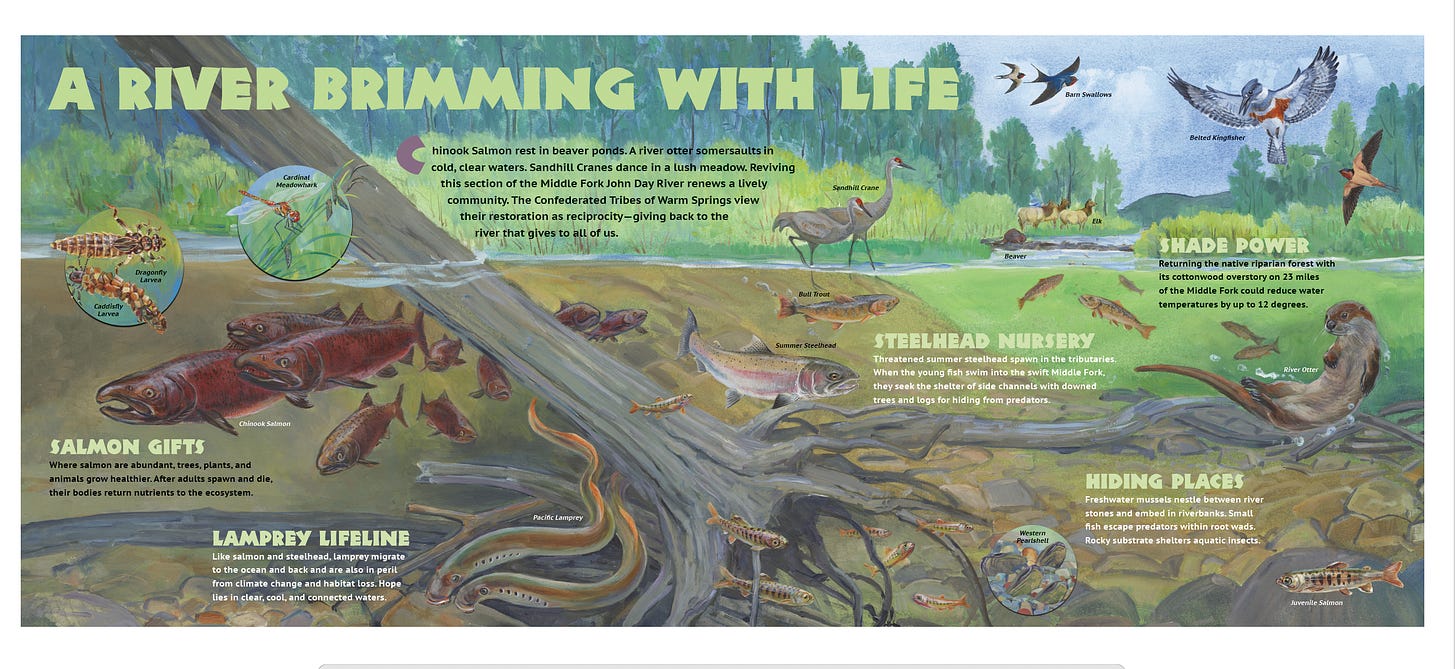
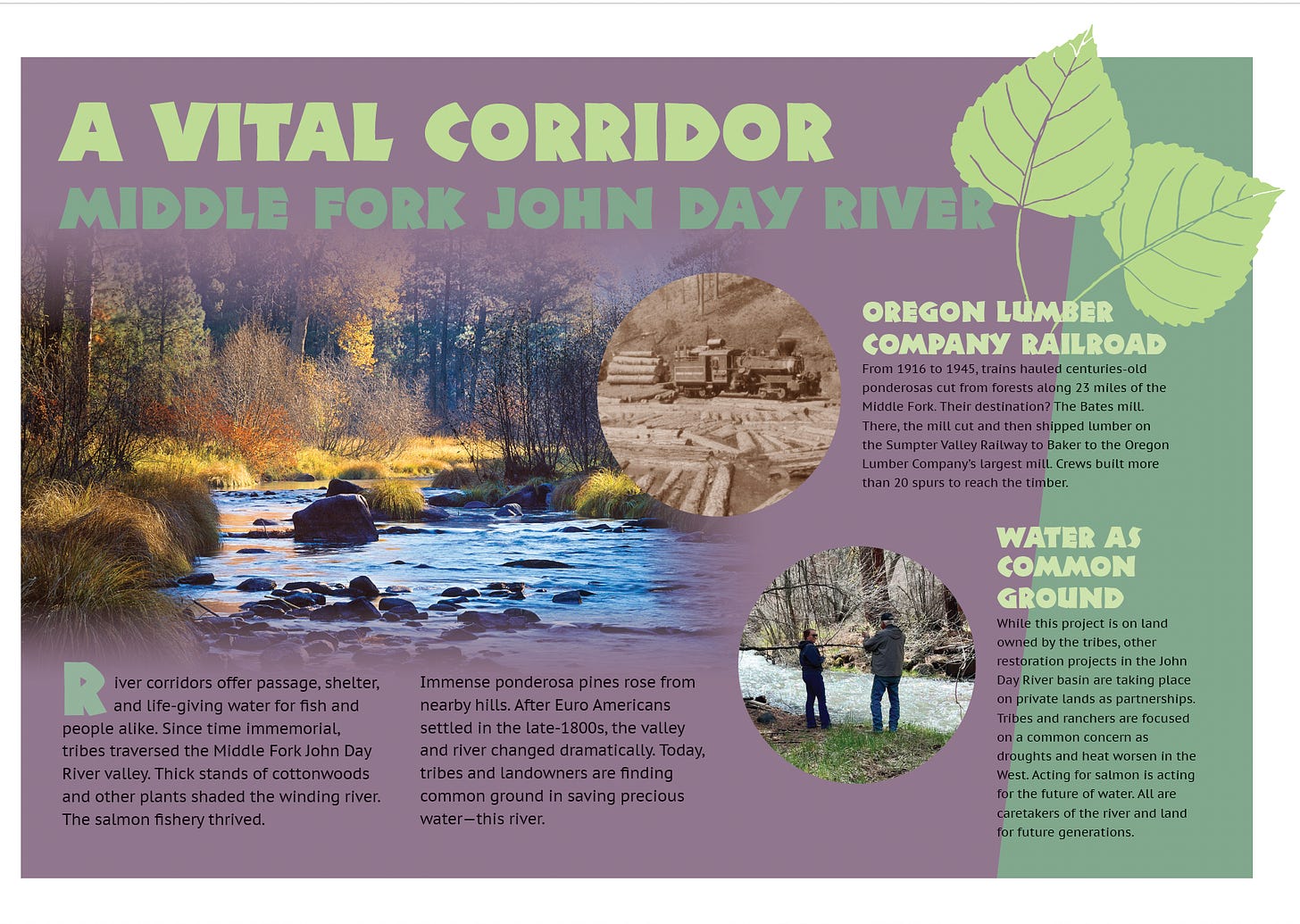
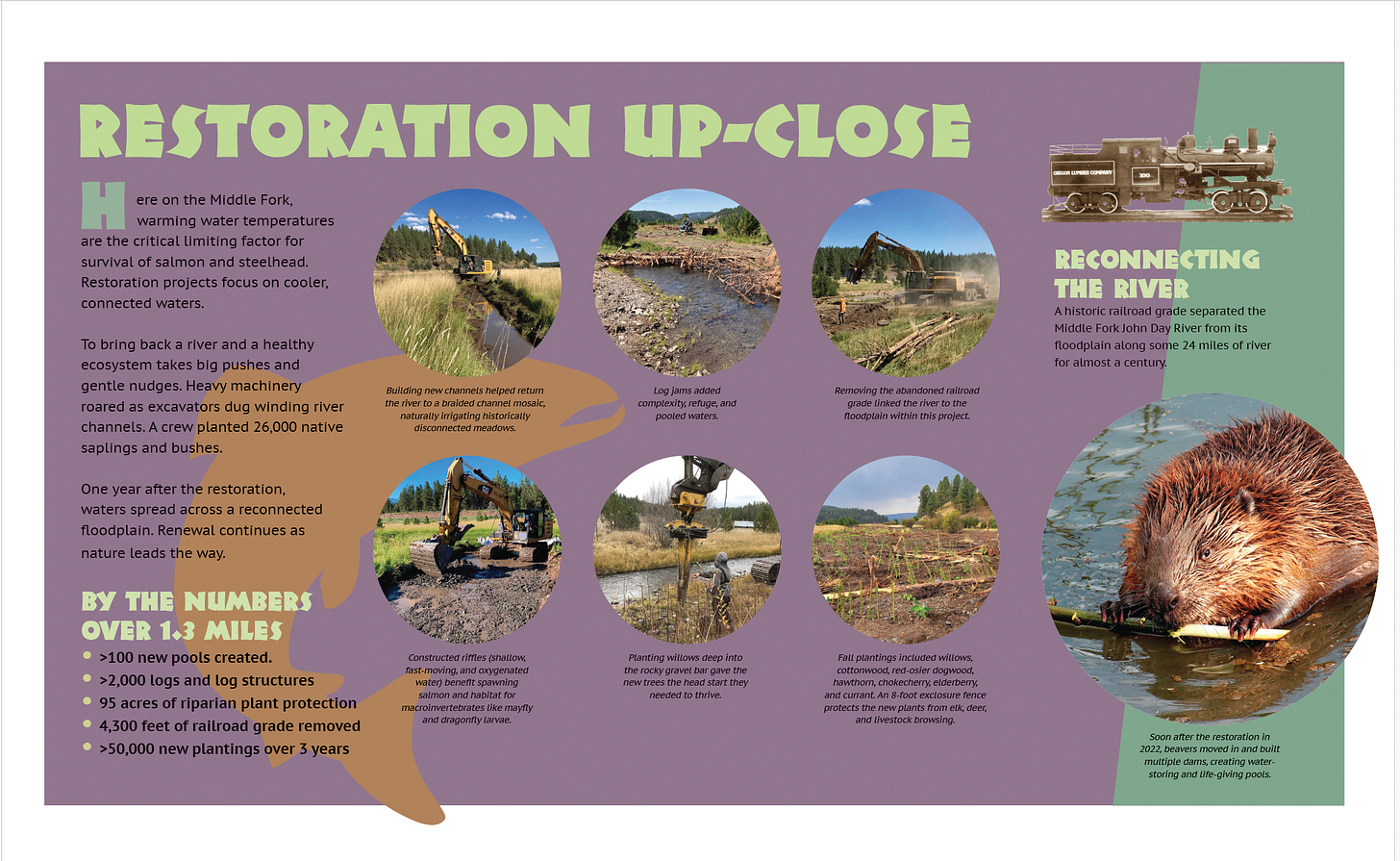

RESTORATION PHOTOS AND VIDEO
See this video from Inter-fluve for the story of the “Vinegar to Vincent” restoration–along the John Day River between Vinegar and Vincent creeks.
Check out before and after photos from the restoration project posted on Instagram– CTWS-JohnDayBasin: “With high spring flows comes some really neat drone photos of our 2022 instream restoration project! The first photo was taken in June of 2022. The second photo was taken in May of 2023. Although we recognize these photos were taken at two different flows, talk about some floodplain connection! We are extremely excited about this project and watching the river create all kinds of habitat!”



“One year post-restoration, Beavers are making themselves at home with many dams built within the Vinegar to Vincent project footprint. But beavers aren’t the only ones enjoying the new pond. Ducks, Otters, Eagles, Deer, and Elk all seem to be enjoying the new habitat. 🦫” CTWS-JohnDay Basin
Finally, I was delighted to see this post after the installation of interpretive signs in June of 2024:

Below are photos of the panels just after installation and before the Confederated Tribes of Warm Springs added the boulders you can see above. The boulders are aesthetic and protective of the panels (think snowplows in winter).


